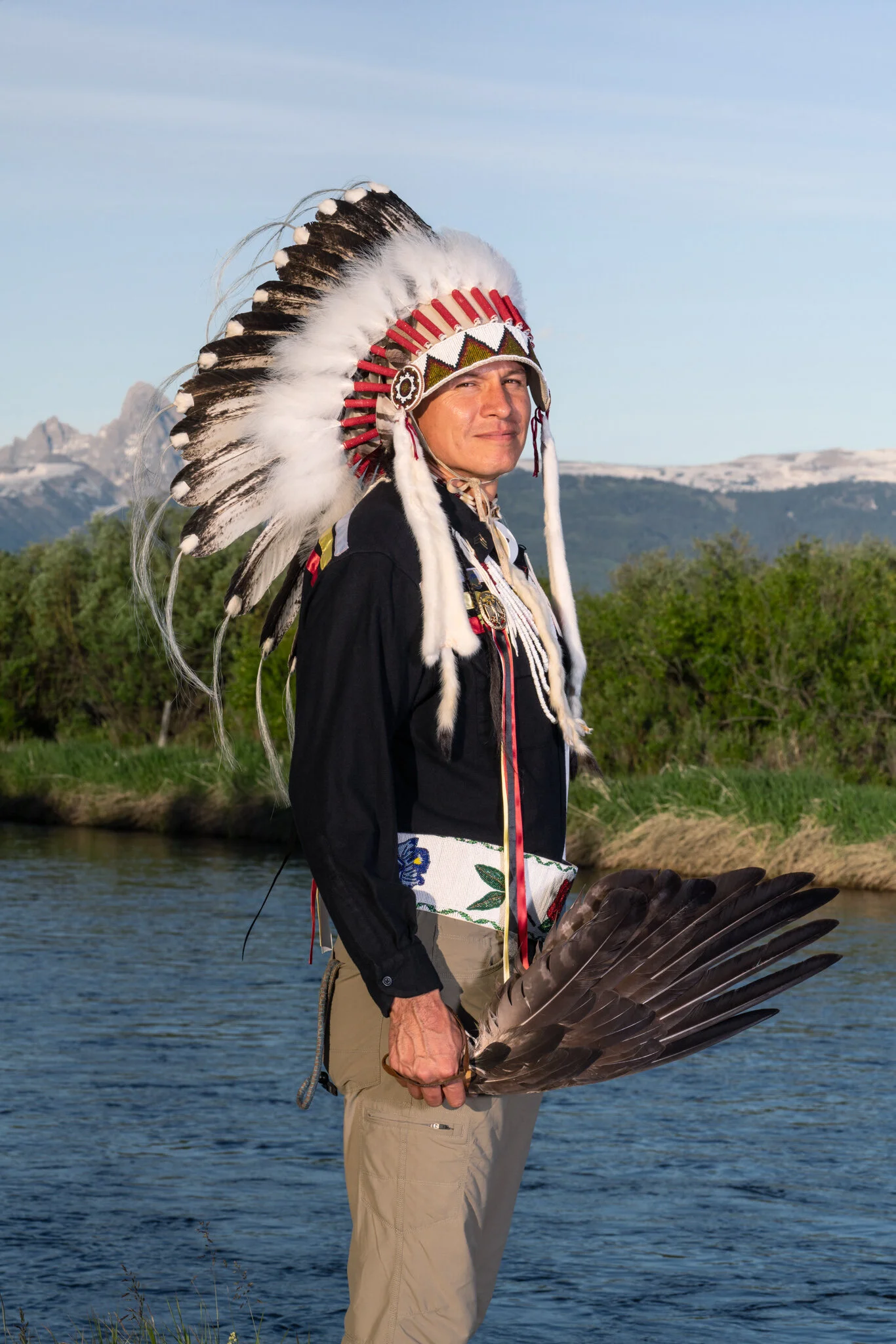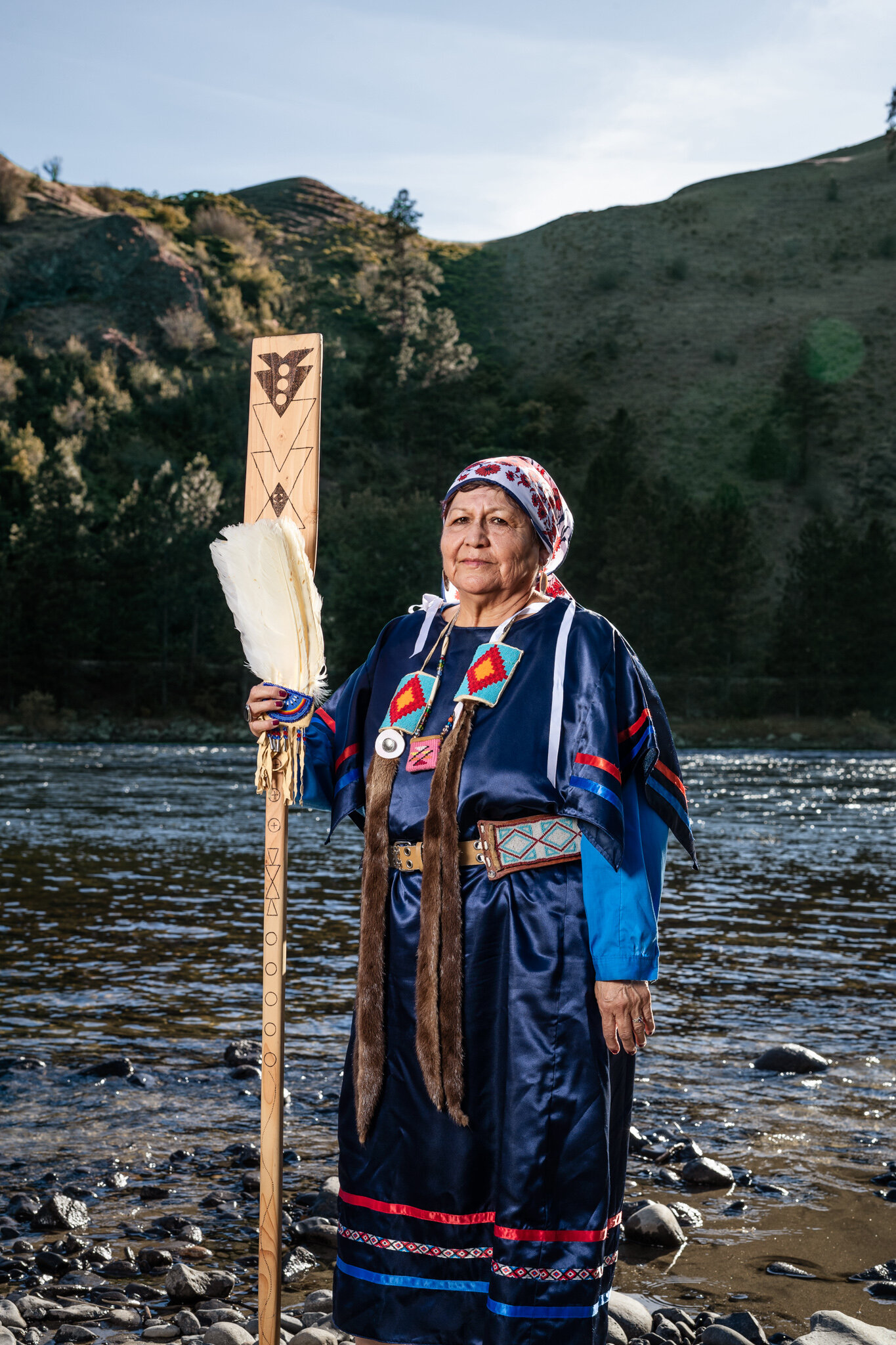Northwest Strong
Cultivating Alliances on the Columbia and Snake Rivers
We are here to invoke and honor the spirit of the Pacific Northwest, one that is focused on values, community, and common ground. Because it turns out when we talk to one another, we have a whole lot more in common than not.
This summer, tribal youth from across the Pacific Northwest traveled through the Columbia and Snake basins as part of a Ríos to Rivers youth exchange to learn more and support Northwest Tribes in their call for action on Lower Snake River dam removal. They have a message for Northwest Members of Congress: We need your leadership now — in this Congress. It's time to free the lower Snake River and keep us all Northwest Strong.

We don’t just live in the Pacific Northwest.
We are the Pacific Northwest.
We love this place and it has worked its way deep into our bones. We are representatives and Indigenous Peoples of the Lower Columbia River, the Lower Snake River, and the Upper Snake River.
We believe now, more than ever, in the wake of the unprecedented uncertainty and loss that has gripped our nation, we need to tap into this spirit to build the Northwest of the future. One that respects and makes good on promises made to Tribal Nations in Treaty Rights and traditional rights of Indigenous Peoples, delivers clean water, renewable energy, efficient transportation, a thriving economy and bountiful agriculture—and recovers healthy, robust populations of wild salmon and orcas.

“This place is medicine. This place is home. It’s my mama. It’s my heart.”
— Jessica Matsaw, Shoshone-Bannock Tribal Member, educator and co-founder of River Newe. Photo: River Newe
We Are Northwest Strong
We are here to invoke and honor the spirit of the Pacific Northwest, one that is focused on values, community, and common ground. Because it turns out when we talk to one another, we have a whole lot more in common than not.
We honor the homelands of Indigenous Peoples who have lived in this landscape since time immemorial, stretching from the Pacific to the Tetons and encompassing the mighty Columbia-Snake River Basin. We pay our respects to their elders past and present.
Upper Snake River Allies
Flowing from the heart of the Teton Mountains, the Snake River and its legendary tributaries—such as the Salmon, the Selway, the Lochsa, the Clearwater and the Payette—connect high-elevation communities with returning wild salmon that migrate more than 1,000 miles inland and nearly 7,000 feet in elevation. The Salmon River watershed runs through the heart of the 2.5 million-acre Frank Church Wilderness, the largest roadless area and contiguous wilderness—and the best remaining protected salmon spawning habitat—in the Lower 48. Upper Snake River Allies photographed by Becca Skinner.
Jessica Matsaw
“It goes beyond me. This place is all the things I want for my kids, and all the things I want for the young people of my Tribe. My grandkids are going to know about these relatives and this river.”
Jessica Matsaw is a Shoshone-Bannock Tribal Member, an educator and a co-founder of the nonprofit, River Newe. She lives in Fort Hall, Idaho.
Sammy Matsaw
“Our story, and that of the salmon, is one of perseverance and resilience and thriving. We’re still here and we’re still strong. This is about who we are and who we want to be.”
Dr. Sammy Matsaw is a Shoshone-Bannock Tribal Member, veteran, and a co-founder of the nonprofit, River Newe. He lives in Fort Hall, Idaho.
Anna Lindstedt
"We all share a reliance on the river system and the common responsibility to protect it as a life-sustaining resource for future generations."
Anna Lindstedt is the Development Director for the nonprofit Friends of the Teton River and is a Fall River Rural Electric Cooperative Board Member. She lives in Driggs, Idaho.

“We are at a watershed moment in history right now where we have not only the urgency to act, but also the ability to act.”
— Mark Deming, marketing director for Northwest River Supplies. Based in Moscow, Idaho.
Lower Snake River Allies
The Lower Snake is a gateway; coursing through the high-desert rolling Palouse hills of Eastern Washington. This hard-working waterway has helped farmers irrigate farms and deliver their goods to market since the 1960s and 70’s when the Lower Snake River dams were constructed. And since time immemorial, the Lower Snake has welcomed home Snake River salmon, steelhead and lamprey to access Idaho and Northeast Oregon’s cold, clean mountain streams—feeding the human communities and powering a thriving economic engine in the Pacific Northwest for more than 13,000 years. Lower Snake River Allies photographed by Ben Herndon.
Lucinda George Simpson
“The salmon have been a way of life for the Nez Perce for millennia. To us, this is a tribal thing. It's not just one person doing this for themselves. It's us building something for our people and for our community.
Without these things that are cultural and traditional, we have no tribe.”
Lucinda George Simpson is a Nimiipuu (Nez Perce) Tribal Elder and a descendent of Chief Joseph. She lives in Lapwai, Idaho.
Julian Matthews
“I'm making sure that a hundred years from now, those people aren't going to lose out on something that we have today. To get there, we need to remove the four lower Snake River dams. That's why we're really fighting with the salmon.”
Julian Matthews is Nimiipuu (Nez Perce) Tribal Member and co-founder of Nimiipuu Protecting the Environment. He lives in Pullman, Washington.
Mark Deming
“I can’t in good conscience support dam removal unless I know we’re taking care of our communities here in the Inland Northwest. We need a big, bold solution that moves the region forward, not backward.”
Mark Deming is the marketing director for Northwest River Supplies (NRS). He lives in Moscow, Idaho.

“Our common ground is that we all need that river.”
— Amy Grondin, co-owner of Duna Fisheries and a commercial fisherman working off the Washington Coast.
Lower Columbia River Allies
The Lower Columbia is so connected to the Pacific Ocean that even more than 100 miles from the sea, strong tides push and pull the river’s flow through the city of Portland, Oregon. The mighty Columbia River and its largest tributary, the Snake, historically welcomed the greatest salmon runs on earth. When Lewis and Clark first explored the Pacific Northwest, they wrote about the rivers and streams of Idaho being so thick with wild salmon that you could walk across their backs. It’s no coincidence that wild salmon form the backbone of our culture, economy and ecosystems. Lower Columbia River Allies photographed by Corey Arnold.
Amy Grondin
“At the heart of it, we want the same thing. We want a job. We want to take care of ourselves, our family and our heritage. We need to get together.”
Amy Grondin is the co-owner of Duna Fisheries and a commercial fisherman working off the Washington Coast. She is based in Port Townsend, Washington.
Barrett Ames
“We're all stronger together. We have a lot more common ground and we all have way more to gain if we can work together.”
Barrett Ames is a guide at Fish The Swing, operating on the Oregon North Coast and the Deschutes River.
Liz Hamilton
“This is common ground for all of us. We all have salmon in common in the Pacific Northwest. This issue speaks to who we are as a society.”
Liz Hamilton is the executive director of Northwest Sportfishing Industry Association. She is based in Oregon City, Oregon.















